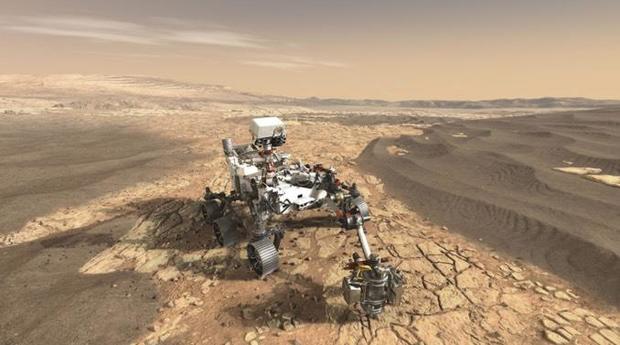
The robot is at a drill sample on the lower slopes of Mount Sharp on Mars. (Image: Getty)
Mars is a planet that was previously thought to be a barren wasteland. The rover, which has been exploring the planet for more than a decade, has helped us better understand the Martian landscape since it landed on the planet’s surface in 2012.
However, a recent discovery in an area of Mars, the planet known as a “sulphate-containing unit”, has NASA particularly excited, after it found “the clearest evidence” of the indications that an important lake may exist in an area that was previously thought to contain only small drops of water.
“This is the best evidence of water and waves we’ve seen during the entire mission,” NASA’s Aswin Vasavada said in a statement last week. “We’ve climbed over thousands of meters of the lake’s sediment and have never seen evidence like this. And now we’ve found it in a place we once thought was dry.”

The Perseverance Mars rover walks on the surface of the red planet. (Photo: NASA)
It has been hypothesized that if life, microorganisms or other forms, ever existed on Mars, evidence of this could be detected near where water once concentrated. Scientists also hope to find clues about how the once-flooded planet turned into the frigid wasteland it is today.
“Billions of years ago, waves on the surface of a shallow lake stirred up sediment on the lake’s bottom, over time creating rippled textures left in the rock,” NASA added in a statement today. /2.
However, efforts to drill samples at the base of Mount Sharp, a 3-mile (nearly 5,000-meter) mountain that once had streams and lakes, were complicated by the rover encountering rocks too hard for the drill. its.
Wen Vasavada added: “The ancient climate on Mars was quite complex, like that of Earth”.
The discovery of water on Mars was first confirmed by NASA’s Phoenix Mars lander in 2008, with subsequent missions to locate a large lake 1 mile below the ice (about 1,600 meters). ) below the South Pole ice cap in 2018.
Source: VTV








